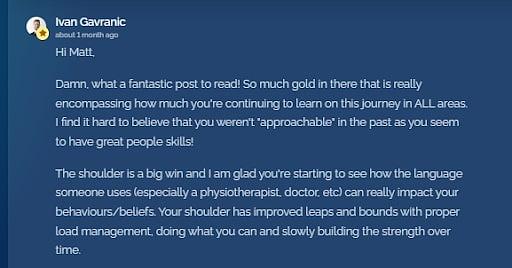First Steps After An Injury
Best Practices For Common Injuries
Lower Back
.jpg)
Shoulders
- Single Arm DB Rows
- Seated Cable Rows
- Barbell Rows (underhand grip)
- Ring Rows
- Rear Delt Cable/Machine Flyes
- Selecting an appropriate load.
- Selecting an appropriate grip (very commonly overlooked).
- Staying 3-4 reps shy of failure.
- Opting for higher rep sets until your technique improves.
- Sending your training videos to a reputable source for analysis.
Knees/Ankles
- Glute Bridges
- Hip Thrusts
- Romanian Deadlifts
- Deadlifts
- Lying/Seated Leg Curls
Additional Tips
- Optimise sleep.
- Manage stress and workload more effectively.
- Move around more during the day if possible to increase blood flow.
- Change postures throughout the day.
- Include more omega 3’s in your nutritional plan.
- Minimise processed foods even further.
- Get a professional to make sure you’re actually lifting correctly and following a sound program.
- Don’t cut calories any further because you feel you’re not “moving” as much.
- Incorporate any specific stretches/exercises given to you by your physical therapist.
- Be patient and keep training!
- Go see a therapist three times a week because they have told you that is the only way to get better.
- Stop training altogether.
- Start eating poorly.
- Use the injury as an excuse as to why you can’t keep making progress.
- Make the injury part of your identity.
- Not film yourself performing the problematic exercises.
.jpg)


.png)

